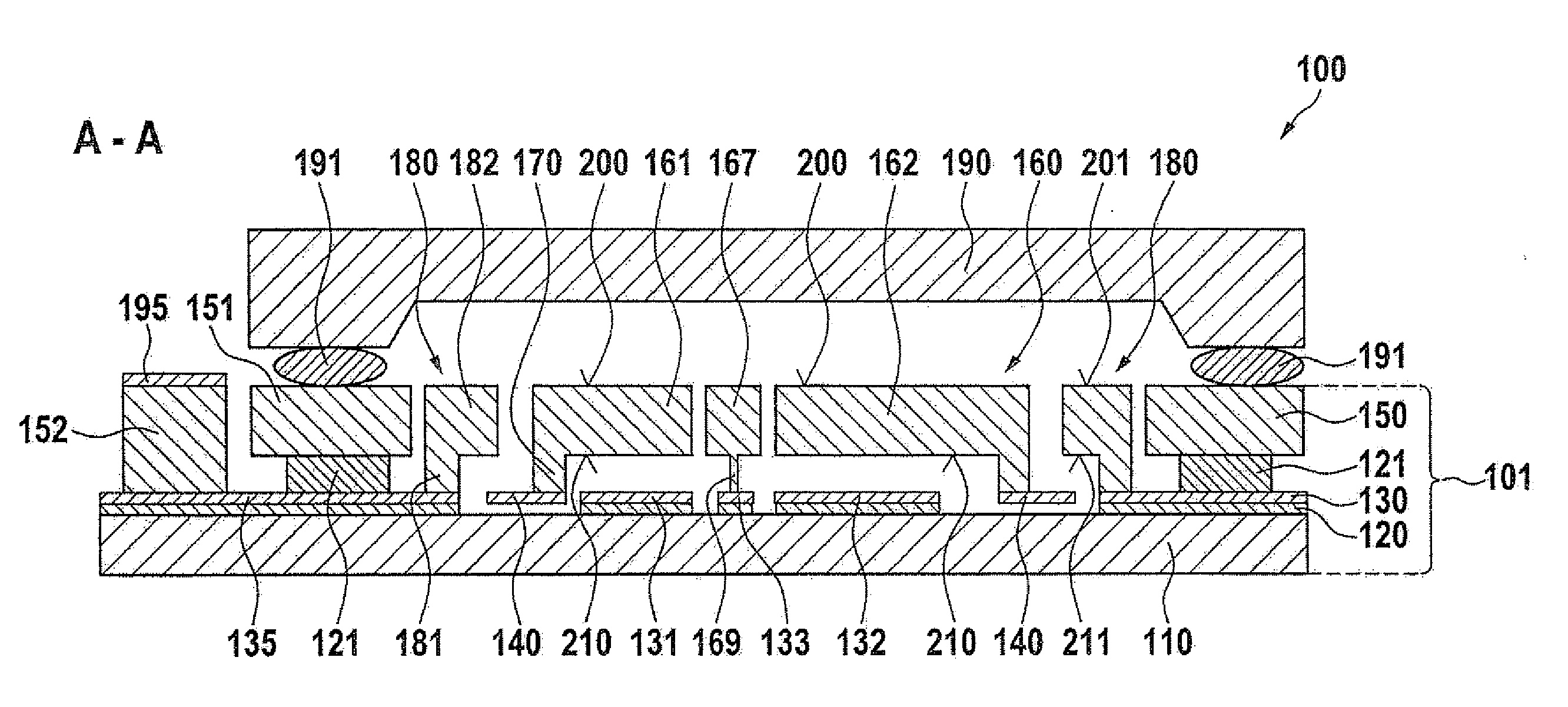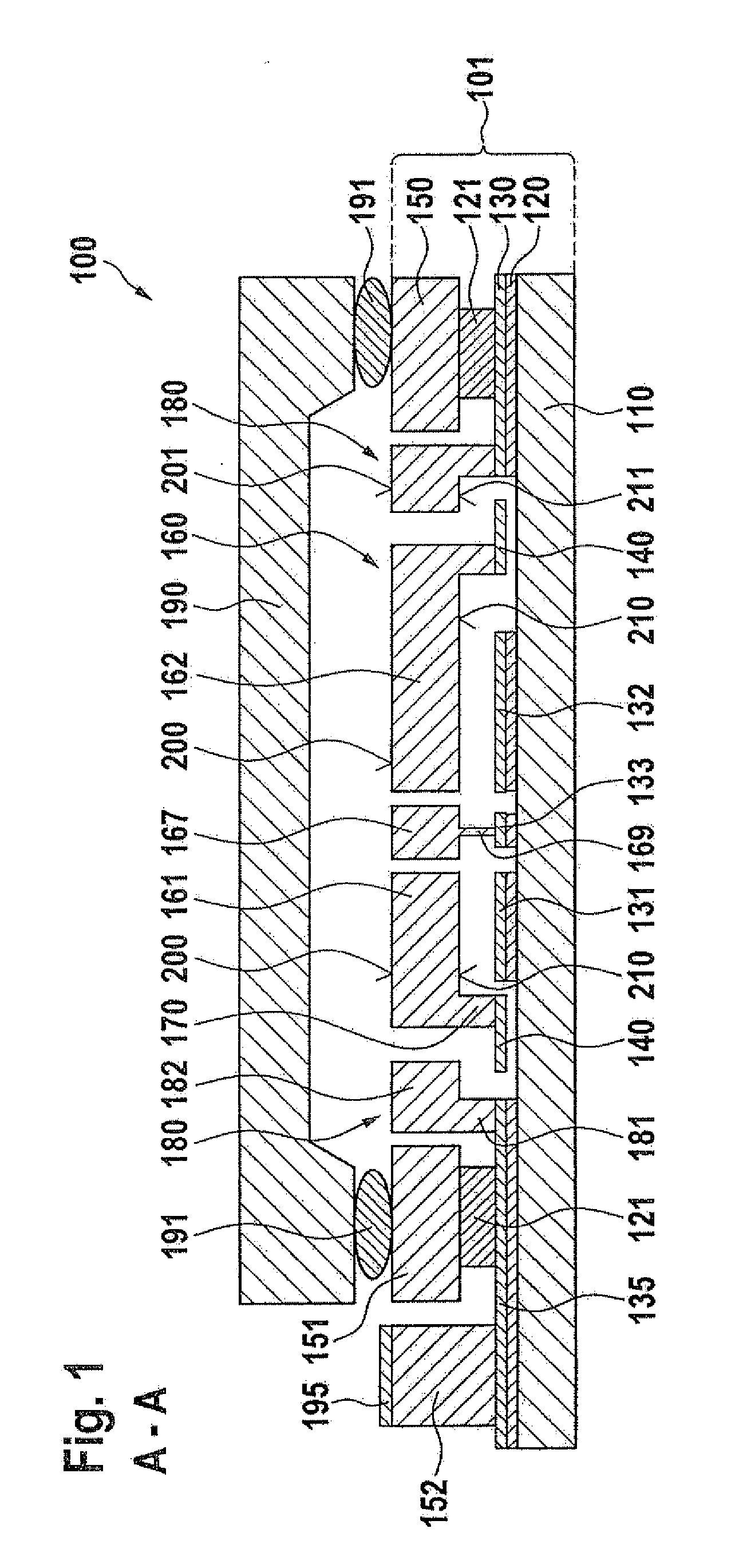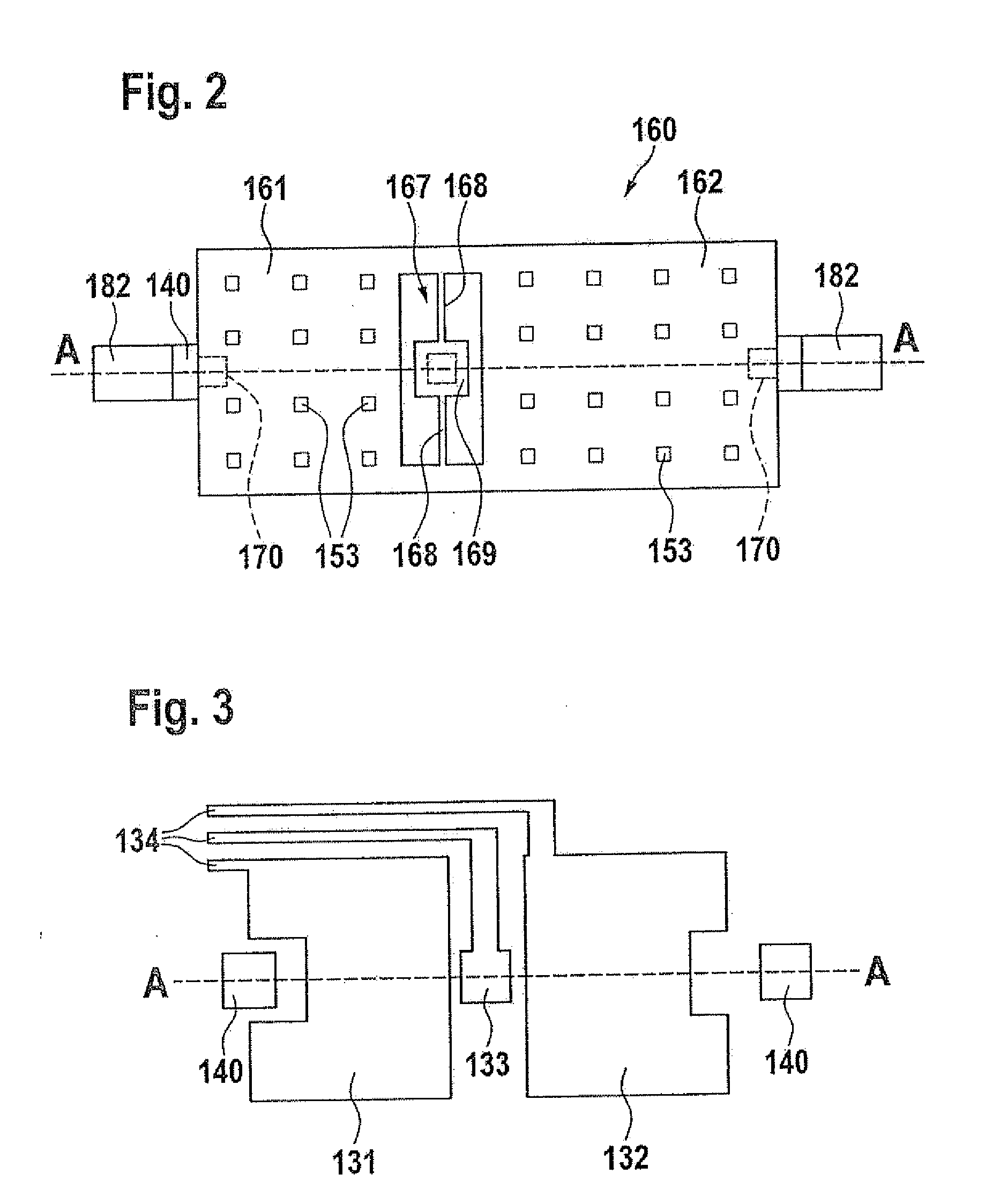Micromechanical component
a micro-mechanical and component technology, applied in the direction of turning-sensitive devices, instruments, manufacturing tools, etc., can solve the problems only possible implementation of small precise distance between stop and seismic mass, and large manufacturing complexity
- Summary
- Abstract
- Description
- Claims
- Application Information
AI Technical Summary
Benefits of technology
Problems solved by technology
Method used
Image
Examples
Embodiment Construction
[0035]The micromechanical components which are described on the basis of the figures, and which are also referred to as “Z sensors,” have a seismic mass, which is situated on a substrate, in the form of a rotatable rocker structure having two lever arms. To limit a deflection of a lever arm of the seismic mass in a direction away from the substrate, the components further have an associated stop structure, which is separate from the seismic mass, and which is situated with high precision and at a defined (small) distance in relation to the seismic mass. Furthermore, possible advantageous methods for manufacturing the components are described. In this manner, for example, components may be implemented in which the freedom of movement of a seismic mass is limited to (significantly) less than 2 μm.
[0036]FIGS. 1 through 3 show a micromechanical component 100 in various schematic views, FIG. 1 including a lateral sectional view and FIGS. 2 and 3 including top views of parts of component ...
PUM
| Property | Measurement | Unit |
|---|---|---|
| freedom of movement | aaaaa | aaaaa |
| distance | aaaaa | aaaaa |
| thickness | aaaaa | aaaaa |
Abstract
Description
Claims
Application Information
 Login to View More
Login to View More - R&D
- Intellectual Property
- Life Sciences
- Materials
- Tech Scout
- Unparalleled Data Quality
- Higher Quality Content
- 60% Fewer Hallucinations
Browse by: Latest US Patents, China's latest patents, Technical Efficacy Thesaurus, Application Domain, Technology Topic, Popular Technical Reports.
© 2025 PatSnap. All rights reserved.Legal|Privacy policy|Modern Slavery Act Transparency Statement|Sitemap|About US| Contact US: help@patsnap.com



